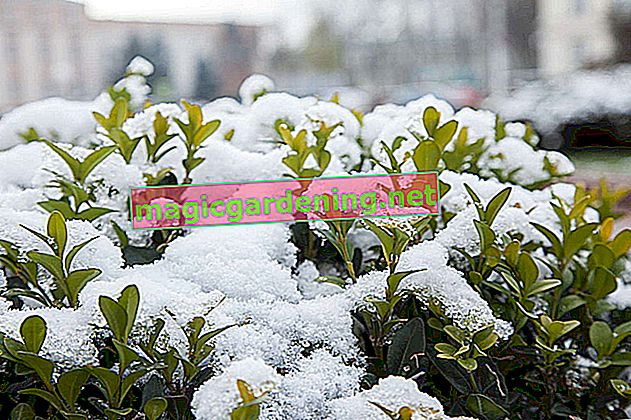
Olive willow (Elaeagnus) are a genus of plants with over 40 species from the olive family. The ornamental wood, which usually grows like a shrub, is robust, easy to care for and easy to cut. The shrubs are suitable for both solitary and group planting as well as for keeping in containers. Some Elaeagnus species can be grown well into hedge plants or decorative high stems.
also read
- Not all olive willow species are hardy
- Not all olive pastures are suitable as a hedge
- Olive willow fruits - decorative and tasty
Olive willow species
Most types of olive willow have their origin in Asia and have different frost hardness depending on the species. They also differ in their height, color of leaves and flowering time. The branches of some olive willows have thorns. Many species of oleaginous produce fruits that are edible. For the most part, the olive willows are deciduous trees, e.g. B.
- Narrow-leaved olive willow (Elaeagnus angustifolia),
- Silver olive willow (Elaeagnus commutata),
- Edible olive willow (Elaeagnus multiflora), also called rich flowering olive willow or Japanese olive willow.
- Coral olive willow (Elaeagnus umbellata), also called umbelliferous olive willow or umbrella olive willow.
Evergreen olive willow species
The most common evergreen ornamental trees in this country are the evergreen olive willow (Elaeagnus ebbingei) and thorny olive willow (Elaeagnus pungens). The Elaeagnus ebbingei is upright, while Elaeagnus pungens grows broad. Both species are not very high at around 2-2.5 m and have elliptically elongated leaves that shine dark green on the top.
Care of the evergreen olive pastures
The evergreen Elaeagnus species are sufficiently frost-resistant, but only keep their foliage in the mild winters. The leaves are thrown off in severe forest, but only to sprout again in spring. The older plants tolerate the frost better than the younger ones. These should initially be given winter protection during long periods of cold weather.
A protected location in the sun or partial shade is an advantage. Oil pastures tolerate dryness of the soil, but waterlogging should be avoided. Regular pruning measures and fertilizers are not required.
Tips
The late flowering period (between September and December) of the evergreen oleaginous species makes them a valuable source of food for insects, but is also the reason why the fruits usually do not ripen in this country.








